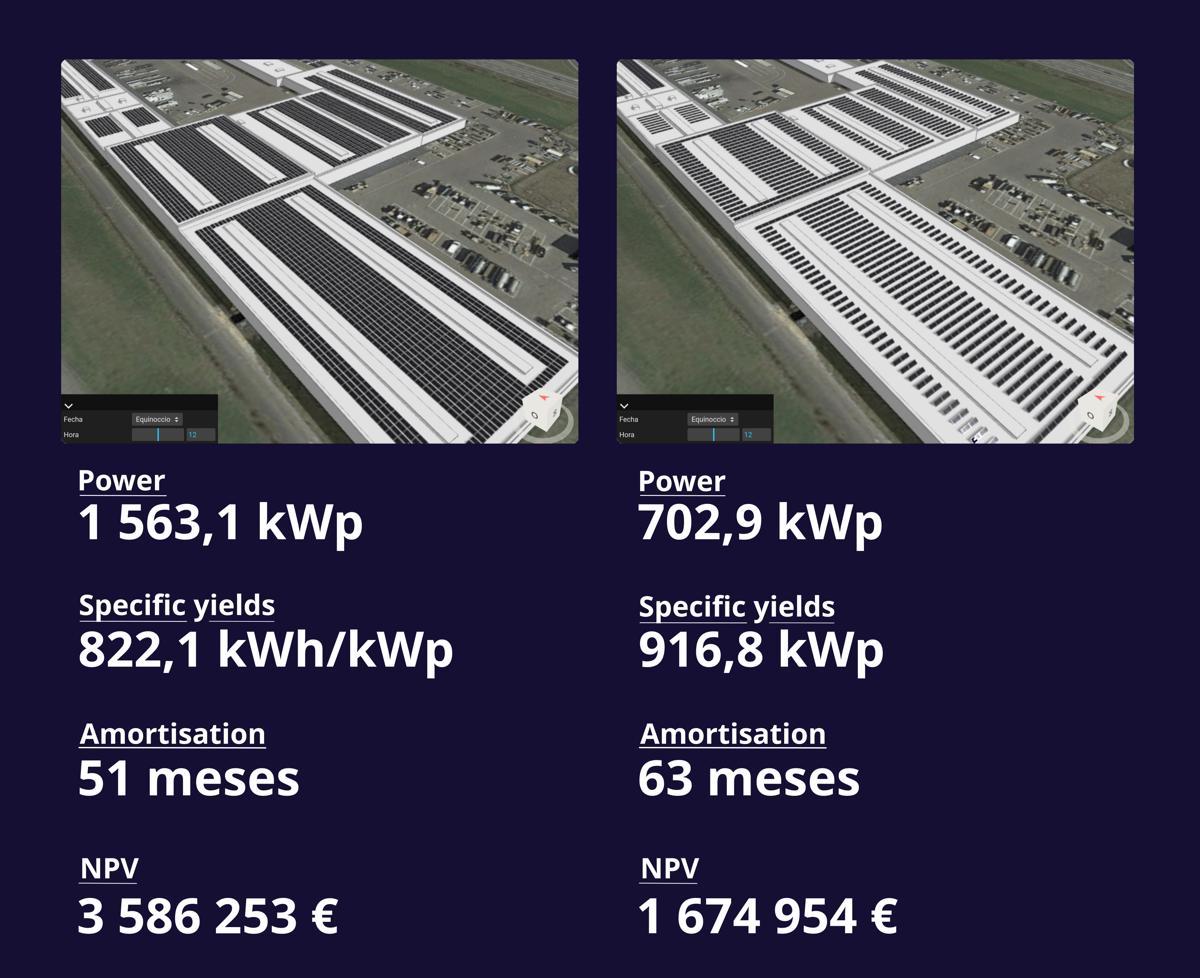In the Northern Hemisphere, should solar panels always be oriented towards the South? Are you sure?
It depends. 😉
In an East-West installation, the total electricity production is lower than in a South-oriented installation, and it also achieves lower generation peaks. However, in return, it generates more energy during the early and late hours of the day.
According to our customer's consumption curve, this can mean a better utilization of energy and thus a higher profitability of the installation. Additionally, this characteristic allows for an increase in the DC/AC ratio with fewer losses due to "clipping" effects and the installation of a lower number of inverters. It also avoids overloads of the electrical system during peak hours.
Due to the arrangement of the panels and their mechanical characteristics, the East-West installation also has other advantages:
- The panel density is higher, allowing you to install more power on the same surface. In addition to generating more energy, unit costs can be reduced through economies of scale, which directly affects the amortization.
- Shadows caused by other panels are avoided.
- It has better performance against wind loads.
📊 In self-consumption, each project is unique, and the suitability of one design type or another will depend on the available space and your customer's consumption profile.
🚀 In the image, you can see the results obtained with ieco.io by utilizing the new functionality for East-West installations with just one click.
For this project, we have considered an electricity-intensive customer, for whom the higher panel density (greater installed power and lower cost due to economies of scale) of the East-West orientation results in a shorter amortization period and a higher NPV.
